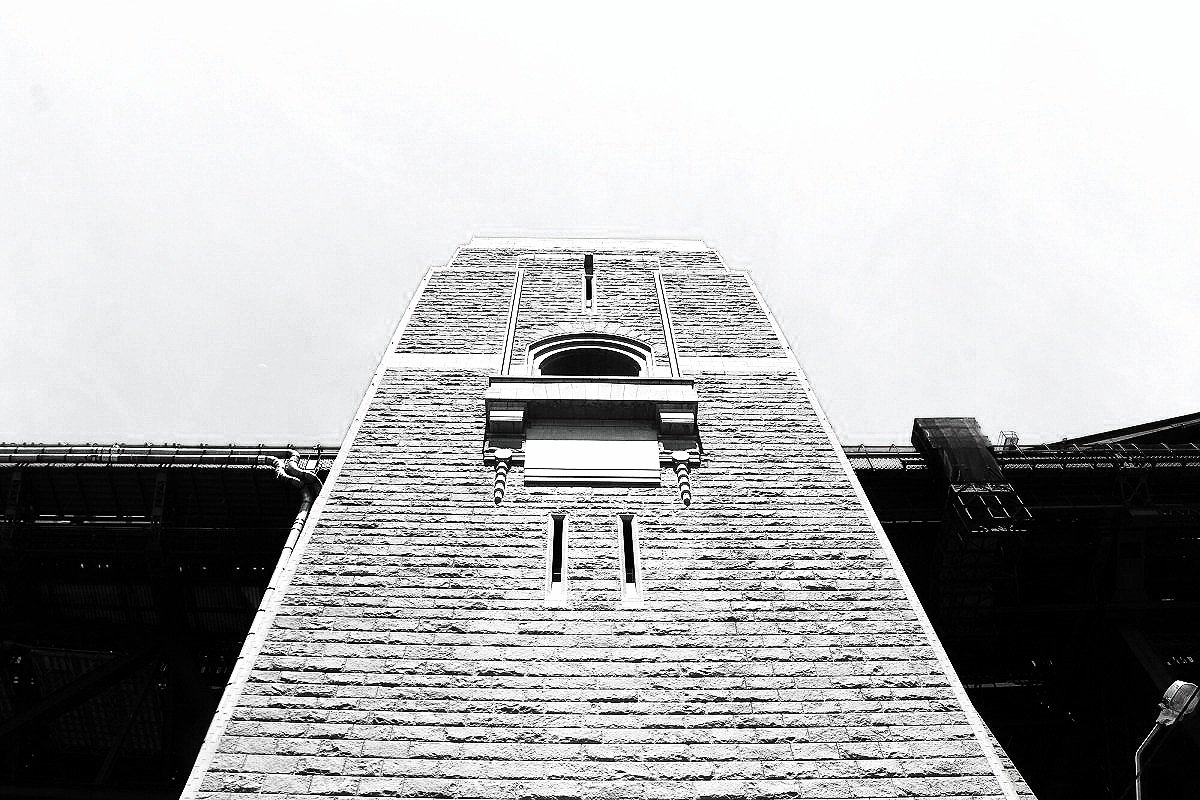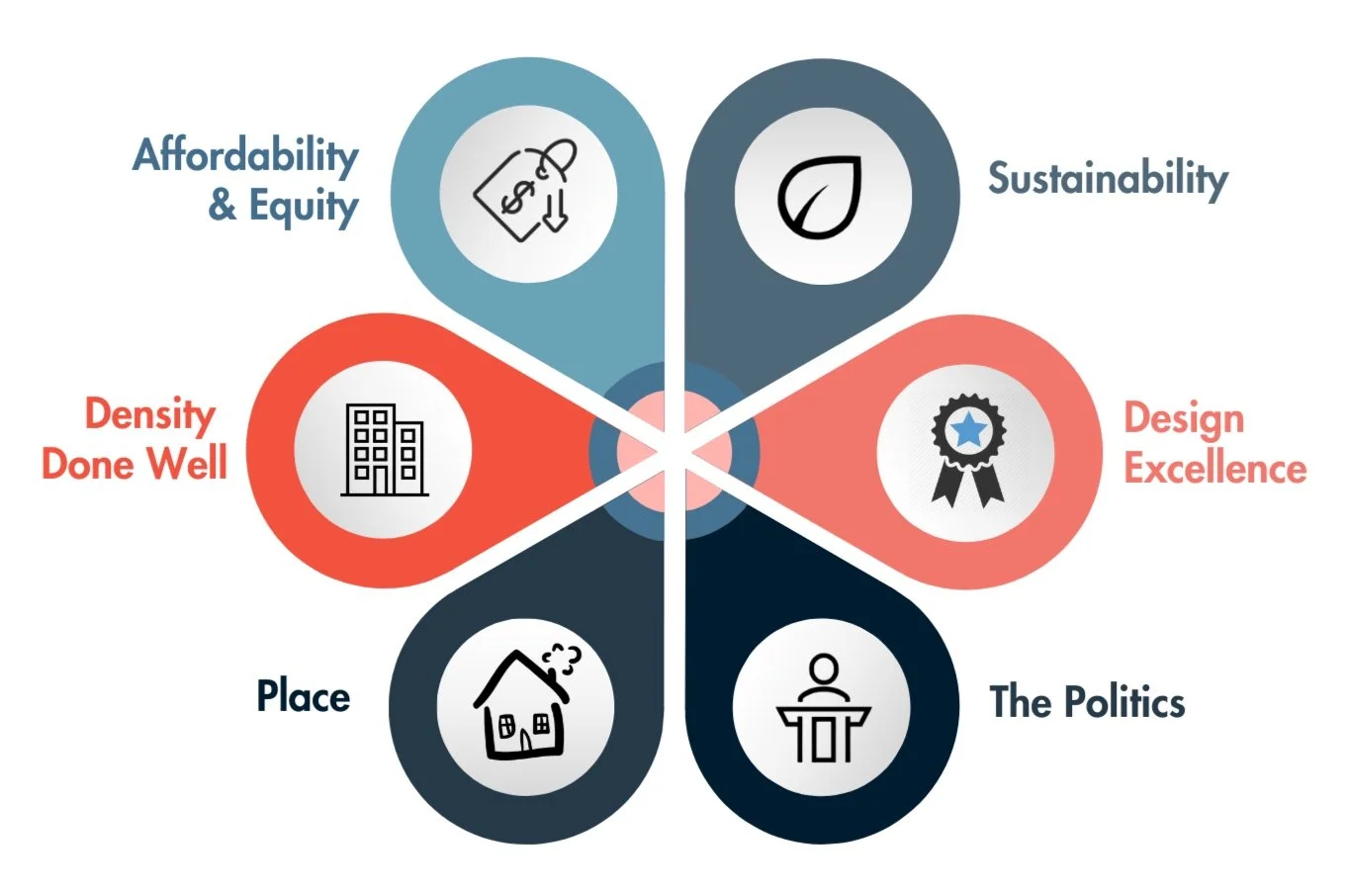
Our Pillars
Brave leadership and bold ideas across these six pillars will deliver the high-quality outcomes Sydney deserves.
These pillars also focus for our team’s advocacy effort and voice.
Our interrelated, strategic pillars work together. By excelling in these six focus areas, we believe Sydney will take the right steps towards reaching our vision.

-

Affordability & Equity
A multifaceted approach, utilising a suite of tools
-

Density Done Well
Increased density delivered with improved liveability
-

Place
Character, personality, story. Unique global brand
-

Sustainable
Bold city making that responds to the climate crisis
-

Design Excellence
A global benchmark for residential design & architecture
-

The Politics
Brave leadership, sophisticated discourse, gutsy policy
Affordability & Equity
-
Housing researchers believe the most effective way to tackle housing affordability is with a multifaceted strategy that harnesses a suite of tools. We agree.
While neoclassical economists call for more supply as the fix. There is little-to-no empirical evidence that slashing red tape and outsourcing housing supply to the private market, will make a dent on affordability. After all, the market is cyclical and construction is dependent on forecasted price growth.
Increasing private supply is crucial to support one of the fastest growing cities in the Western world. But it must be delivered alongside a suite of other tools, because there is no convincing evidence where trickle-down economics has improved housing affordability.Furthermore, we need governments contributing to housing supply themselves, at scale. We advocate for a permanent, legislated commitment to social housing construction and upgrades.
We also need substantial amounts of affordable housing as part of the supply mix. We advocate for mandatory inclusionary zoning in perpetuity (not just 15 years).
The affordable housing quota should be at least 10%. It needs to be higher in areas of significant planning uplift, which deliver substantial windfall gain. Global city peers have found the political will to deliver high rates of affordable housing. So, why can’t we?
Finally, decades of tactical legislation have transformed our housing market to one where housing is commonly treated as an investment vs. a place of shelter. The rules of the game are often stacked against first-time home buyers and non-investors. Reform is needed.
This includes reforms to negative gearing, capital gains tax, AirBNB, vacant homes and bold rental reform.
Density Done Well
-
We advocate for “Density Done Well” – not the “Density Done Recklessly” nature of the NSW Government’s housing reforms.
“Density Done Well” means that the community can accommodate more people and homes, while at the same time – improving liveability. It also aims to deliver great place outcomes for locals.
Doing density well requires a masterplan. One that incorporates necessary physical and social infrastructural upgrades, residential amenity needs, prioritises environmental protection, balances trade-offs and delivers real improvements to liveability.
Planning a city by drawing circles on maps is a development-centric approach, not a resident-centric approach – and genuinely threatens Sydney’s unique liveability in many of the TOD and LMR precincts. It also won’t deliver the great place outcomes we advocate for.
Transport-orientated development (TOD) and increased density around transport hubs makes sense – but only when modelling demonstrates that it can be supported by infrastructure and amenity that accommodates the projected population increases.
At a broad stroke, “Density Done Well” focuses on the following:
a) Increases in mid-to-high density housing.
b) More walkable streets and ease-of-movement, rather than roads and cars.
c) A high proportion of mixed-use development – because this is the place that residents live, work and play.
d) A mixture of architectural design, enabling character and avoiding the “cookie cutter”.
e) A diversity of residents from different backgrounds, demographics and life experiences.
f) Connection via well-planned and funded infrastructure.
Place
-
Yes – “place” refers to the great place outcomes enabled by proper strategic planning and by “density done well”. However, for us, it also means that “sense of place”.
Our built-environment (and how it is laid out) plays a crucial role in defining how we perceive the place we call home and the meaning we attach to it.
Sydney is a collection of different communities and this is one of its biggest assets. Many of these communities have their very own sense of built-environment place.
The built-environment ingredients that enable this sense of place – such as character, personality, design and story – not only make Sydney more loveable for its locals.
These same ingredients also create memorable places for those come to visit Sydney as tourists, too.
In a highly competitive global travel marketplace – Sydney’s unique sense of place, differentiates us from other cities and plays a crucial role in our brand value.
Disappointingly – the one-size-fits-all-circles-around-town-centre approach, runs roughshod straight over the top of this invaluable asset.
We advocate for strategy & policy that recognises and enables Sydney’s unique sense of place, through design excellence and strategic planning.
For without it, we whittle away the loveable and dilute our unique built-environment brand with homogeneity and the cookie cutter.
Sustainability
-
With the housing reforms ushering in “once in a generation” built-environment change to Sydney – this is the moment for bold policy on sustainable development.
Many of the developments built over next ten years will stand in place for one-hundred years.
With the climate crisis only worsening – these buildings must start setting the sustainable building standards we’ll expect tomorrow.
We expect to see policy that is innovative, bold and that pushes the envelope on sustainable building design, development and material use.
We need a sustainable development standards system immediately. New buildings should be of the highest environmental standard and reuse existing structures where possible.
Adaptive reuse of under-utilised existing office space needs to be explored in Sydney and regulation changed to better enable it.
And it’s not just about the construction phase. It’s also about the daily energy usage of new dwellings, once built.
Urban renewal should re-evaluate the existing street network to create better walking and cycling infrastructure to promote active transport as the most convenient form of travel for local trips, including to the shops, schools and parks.
Design Excellence
-
Sydney is world famous for its natural beauty. We are also the home of iconic built structures like the harbour bridge and the opera house.
Home to incredible architectural talent, a unique climate, proximity to water and a cosmopolitan lifestyle – we aspire to becoming a global benchmark for increased density meets residential design.
We want this “once-in-a-generation” built-environment change in Sydney to stand the test of time. To age well, not poorly.
And it’s not just about the aesthetics. It’s also about the type of dwellings and spaces we design too. Dwellings designed to be loved and embraced by families for decades – not just designed to appeal to investors.
Open spaces designed to give young children being raised in higher-density – an interactive, play-filled lifestyle that bolsters healthy development. Spaces that help generate that sense of place.
With the right leadership too, NSW should be positioned as the world leader in big city upgrades. Knowledge and expertise for hire when other worlds cities confront these same affordability challenges.
There is nothing stopping Sydney from becoming a leader in world-class design for higher-density, suburban living.
The Politics
-
Politics sits at the heart of this issue.
Not just because politicians are the decision makers & gatekeepers of the changes needed to tackle housing affordability.
But also because of the issue’s complexity, which carries with it substantial political risk. Something retail politicians aim to manage and reduce.
Afterall, Australia’s electoral “marketplace” is changing. Vote margins for both major parties are increasingly thin on the ground.
This means wedge politics is still prolific, meaning “the optics” are often more important than the political risks that always come with meaningful reform.
Politicians want to appear “decisive” on this issue, but are also being called out for “tinkering around the edges”.
Crucially, the different voter cohorts on this issue see it from differing perspectives – whilst also calling for differing outcomes from politicians.Move the lever here, you tweak the lever over there. Appealing proposals for one cohort, may anger another. It’s a tightrope walk.
Fundamentally though, housing affordability can only be tackled with brave reforms.
We also need a more sophisticated discourse on this issue, rather than one currently driven by the government’s single-dimensional narrative.

